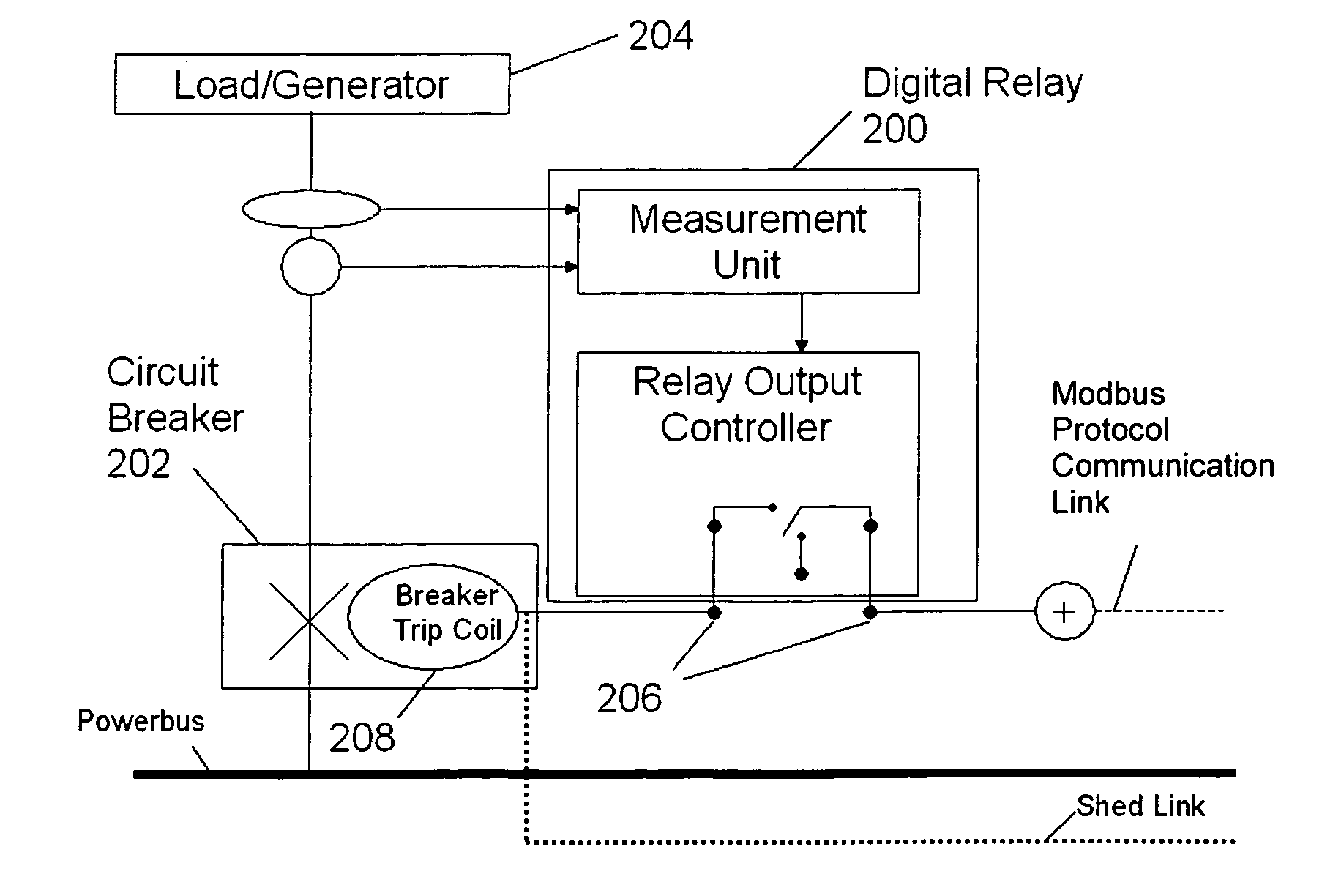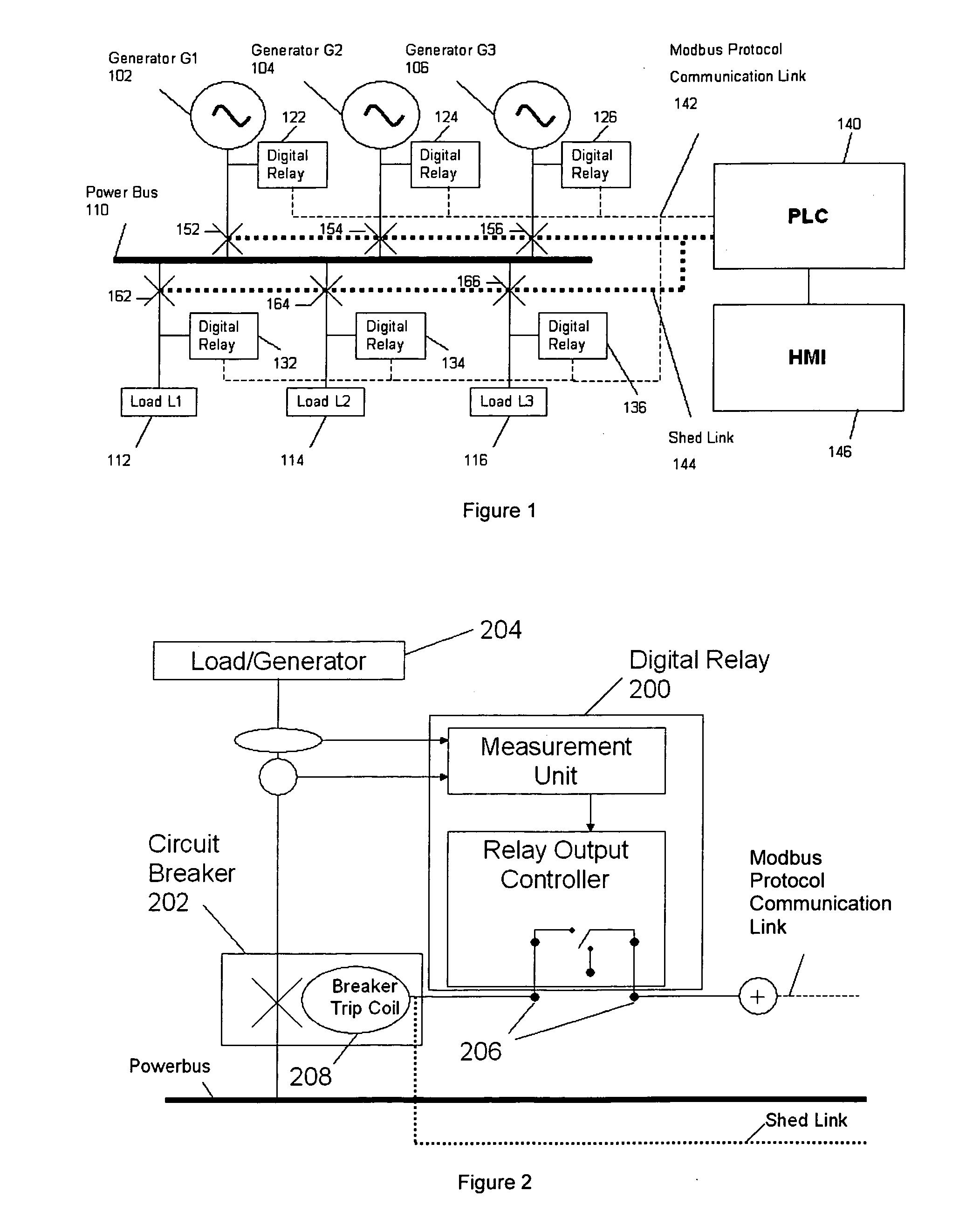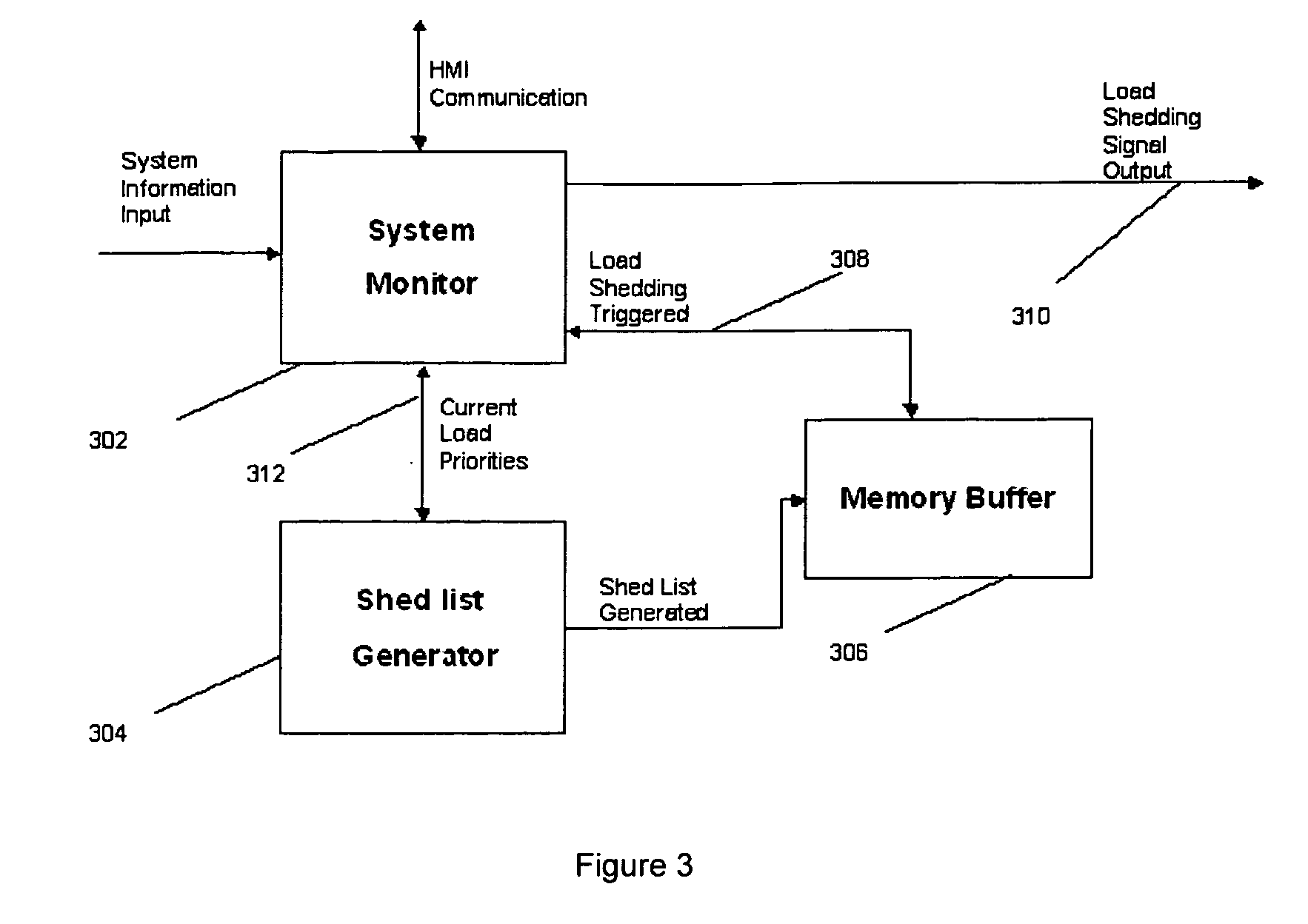System and method for power management and load shedding
a power management and load shedding technology, applied in non-electric variable control, process and machine control, instruments, etc., can solve the problems of insufficient and excessive load shedding, slow response time to disturbances, and knowledge base that requires expensive computation engines
- Summary
- Abstract
- Description
- Claims
- Application Information
AI Technical Summary
Benefits of technology
Problems solved by technology
Method used
Image
Examples
Embodiment Construction
[0031]An example embodiment of the present invention discloses a system for power management and load shedding at an offshore platform or an FPSO. The system exploits the capability of modern digital relays to provide status and metered parameters of each major load and generator. Through modbus communication, the information is retrieved from digital relays and delivered to a specially developed Programmable Logic Circuit (PLC). This PLC provides two functions associated with Power Management Systems (PMS), namely system monitoring and shed list generation. The PLC may also display the information through a shared HMI (Human Machine Interface) for process control. At the HMI, information for each major load and generator may be displayed in the form of a network graphic with parameter thresholds. Whenever necessary, users may control the loads and generators through the HMI and manually override any automated load shedding sequences or enter and edit load priorities.
[0032]An exampl...
PUM
 Login to View More
Login to View More Abstract
Description
Claims
Application Information
 Login to View More
Login to View More - R&D
- Intellectual Property
- Life Sciences
- Materials
- Tech Scout
- Unparalleled Data Quality
- Higher Quality Content
- 60% Fewer Hallucinations
Browse by: Latest US Patents, China's latest patents, Technical Efficacy Thesaurus, Application Domain, Technology Topic, Popular Technical Reports.
© 2025 PatSnap. All rights reserved.Legal|Privacy policy|Modern Slavery Act Transparency Statement|Sitemap|About US| Contact US: help@patsnap.com



